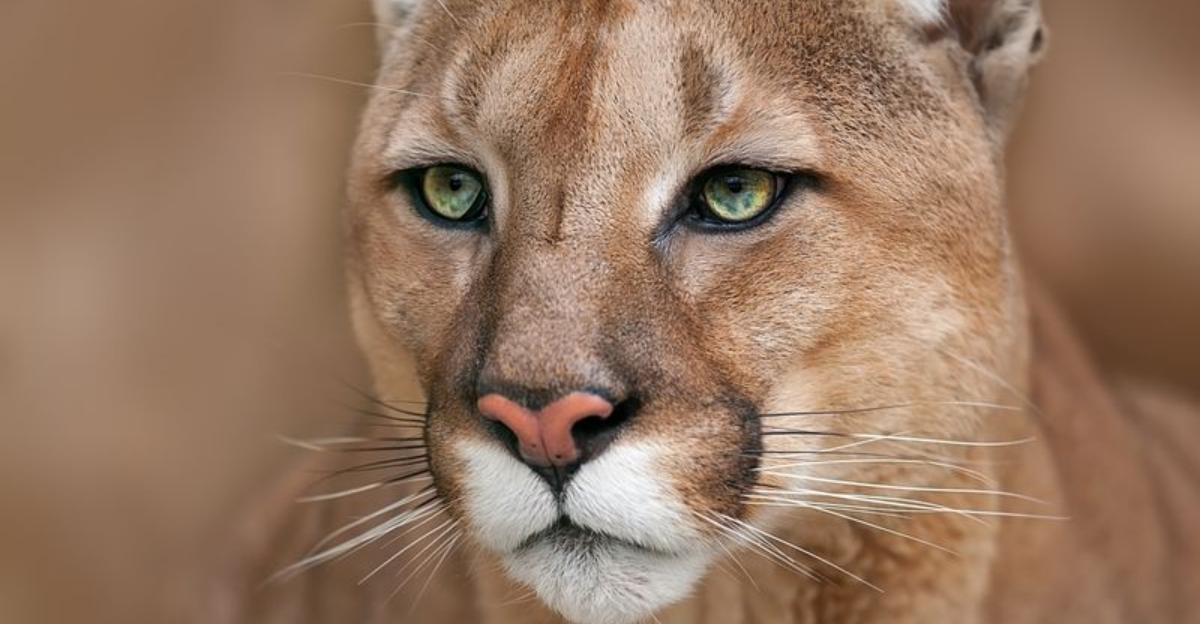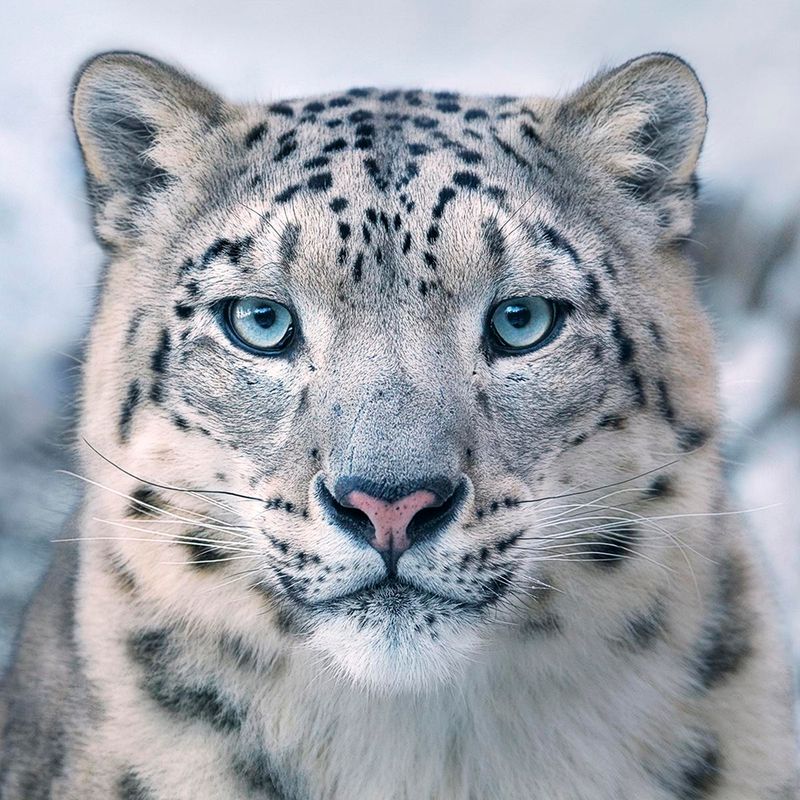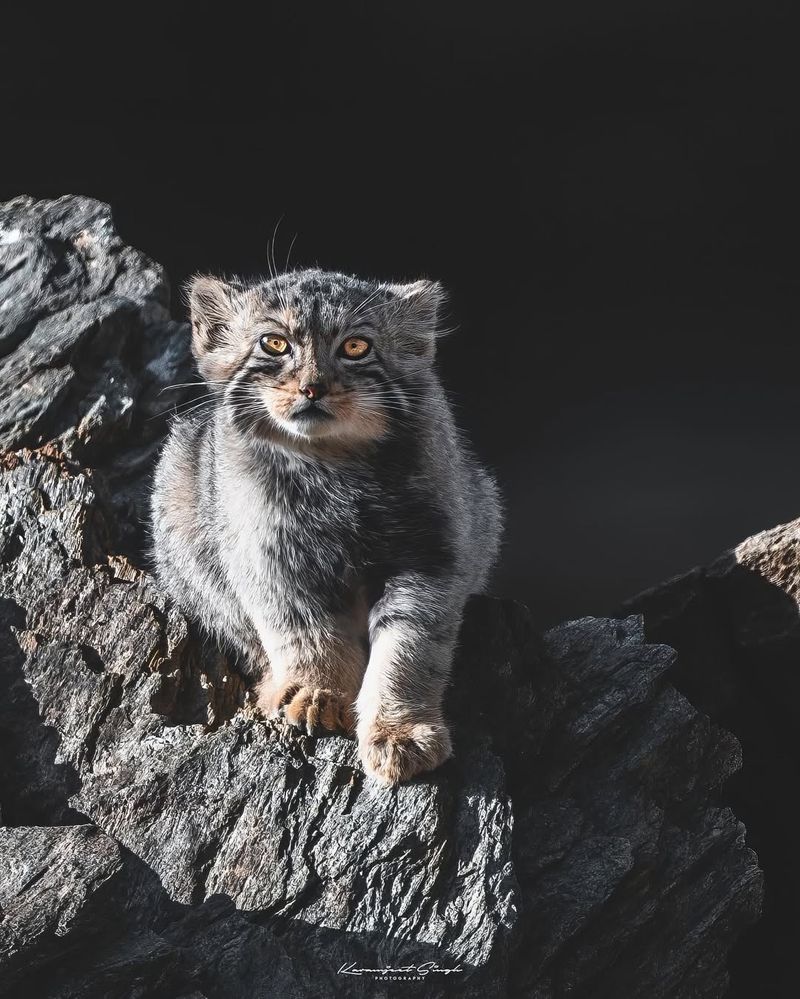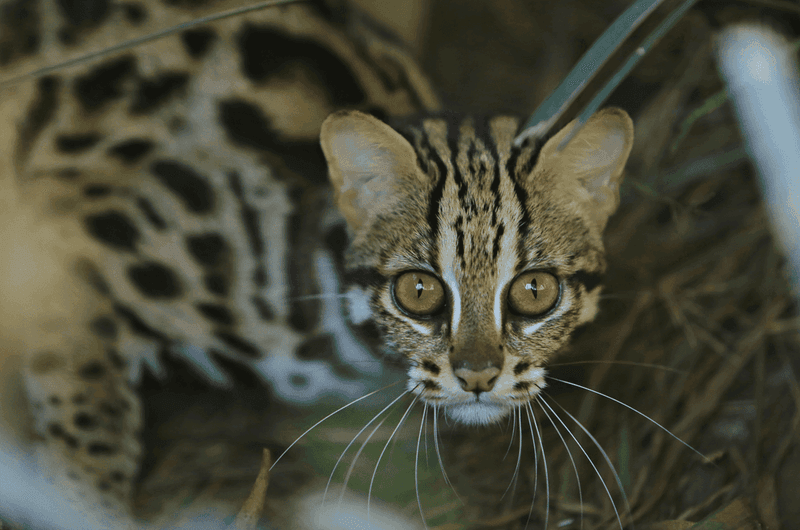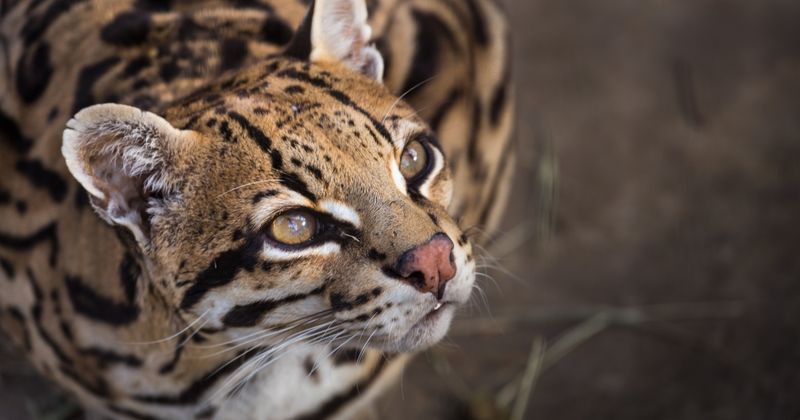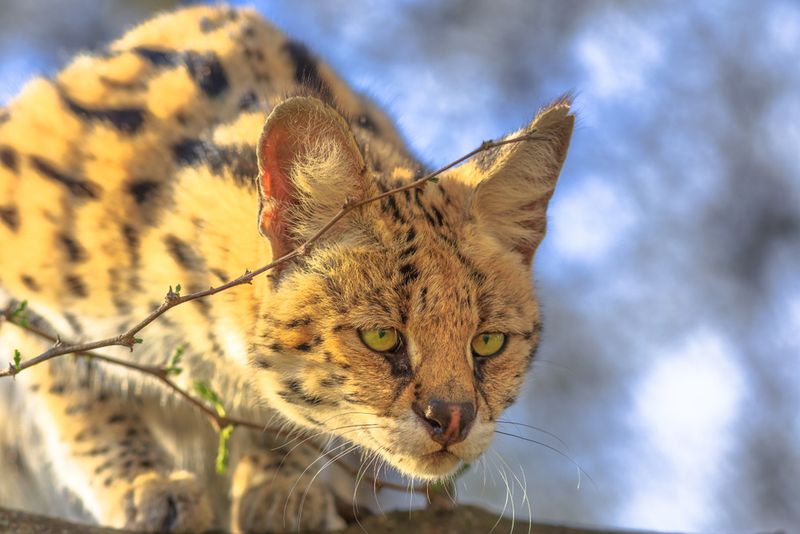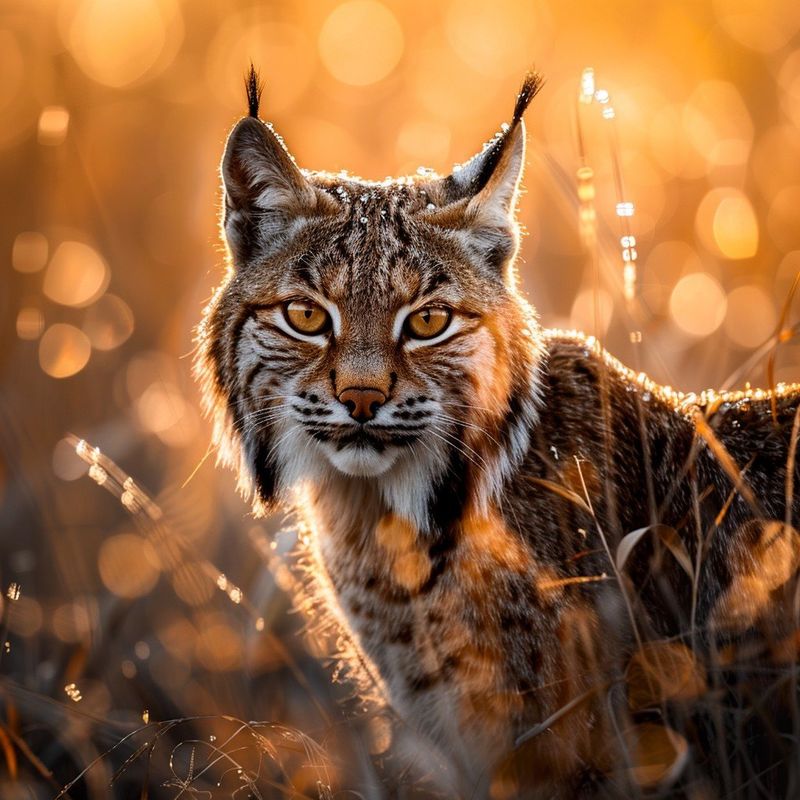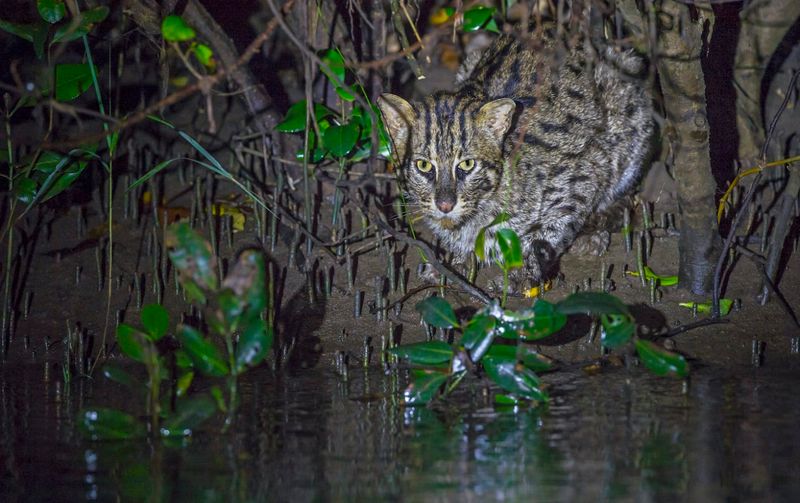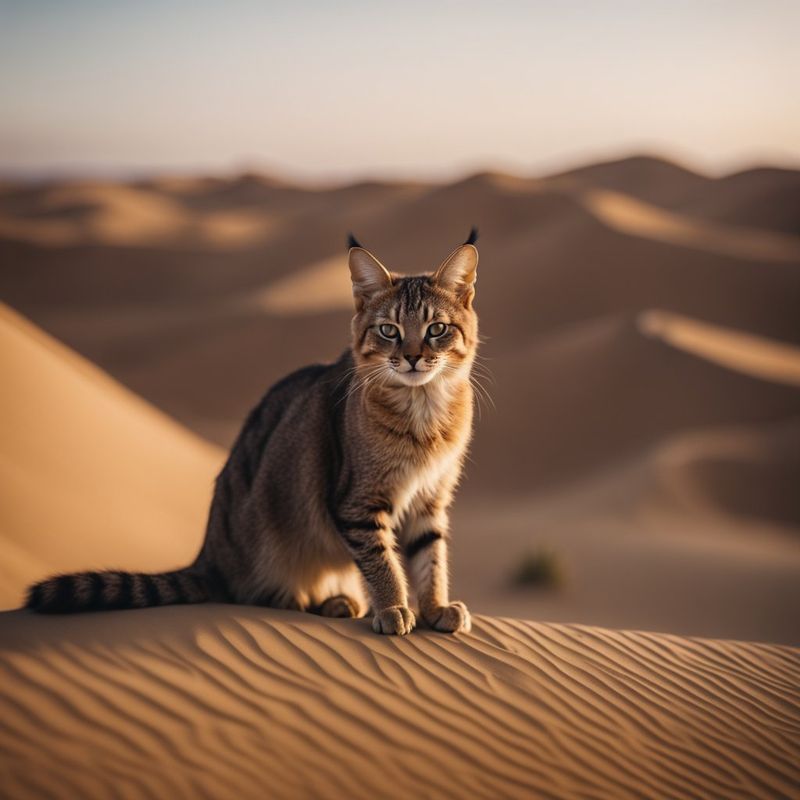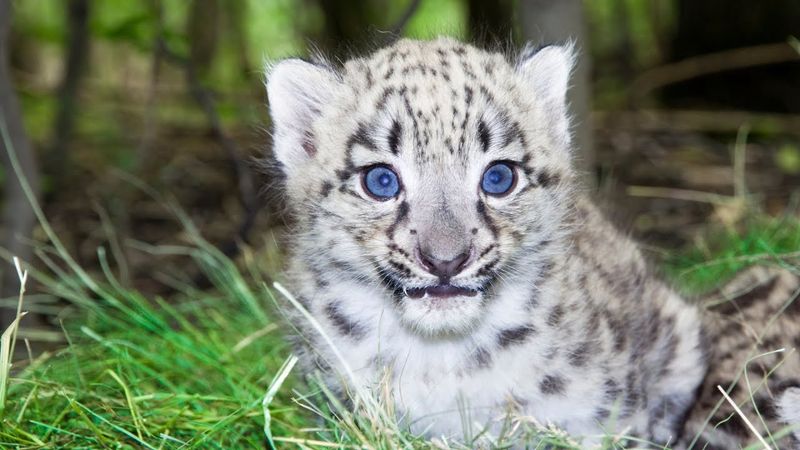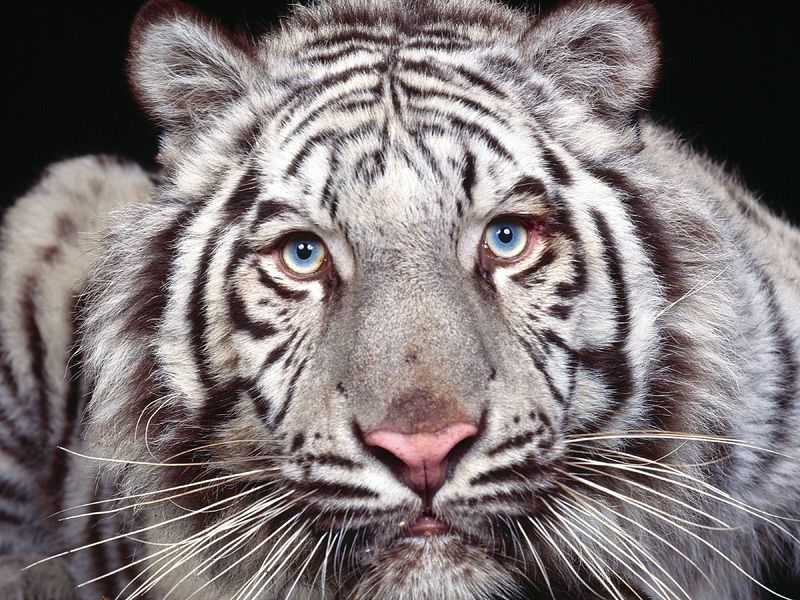📖 Table of Content:
- 1. Snow Leopard’s Crystal Blue Gaze
- 2. Clouded Leopard’s Golden Portals
- 3. Pallas Cat’s Round Copper Coins
- 4. Margay’s Enormous Amber Orbs
- 5. Caracal’s Intense Copper Stare
- 6. Ocelot’s Glowing Amber Lanterns
- 7. Serval’s Liquid Gold Gaze
- 8. Eurasian Lynx’s Piercing Yellow Beacons
- 9. Leopard’s Emerald Night Vision
- 10. Fishing Cat’s Aquatic Amber Vision
- 11. Jaguar’s Intense Topaz Stare
- 12. Sand Cat’s Desert-Adapted Amber Orbs
- 13. Puma’s Luminous Gold Gaze
- 14. Clouded Leopard’s Azure Mystery
- 15. Tiger’s Sapphire Surprise
Wild cats captivate us with their powerful presence and mysterious nature, but their eyes might be their most enchanting feature. From electric blues to fiery ambers, these magnificent predators possess eye colors that range from mesmerizing to downright supernatural. Their unique eye pigmentation serves important functions in the wild while also making them some of the most visually stunning creatures on our planet.
1. Snow Leopard’s Crystal Blue Gaze
Snow leopards possess pale blue-green eyes that perfectly complement their smoky gray coats. These ghostly mountain dwellers use their remarkable vision to spot prey across vast, snowy landscapes.
Their unique eye color results from a special reflective layer behind the retina that enhances their ability to see in dim mountain light. This adaptation helps them navigate treacherous terrain during dawn and dusk hunting hours.
Unlike most cats whose eyes change color as they age, snow leopards maintain their icy blue gaze throughout their lives. This permanent feature makes them one of the few wild cats with consistently light-colored eyes in adulthood.
2. Clouded Leopard’s Golden Portals
Amber-gold eyes shine like twin suns from the shadowy face of the clouded leopard. Their eyes contain a fascinating mix of yellow and orange pigments that create a warm, glowing appearance even in low light.
Scientists believe the golden hue helps these cats blend perfectly with the dappled sunlight of their Southeast Asian forest homes. When hunting, their eyes appear to change intensity with shifting forest shadows, making them nearly invisible to prey.
A distinctive black line runs from the corner of each eye down their cheeks, creating a dramatic frame that makes their golden gaze even more striking against their cloud-patterned coat.
3. Pallas Cat’s Round Copper Coins
Round as copper coins and just as bright, the Pallas cat’s eyes stand out dramatically against its fluffy gray face. Unlike other wild cats with vertical slits, these Central Asian felines maintain round pupils even in bright daylight.
Their distinctive rusty-orange eye color comes from high concentrations of yellow pigments in their iris. Pallas cats use their exceptional vision to spot small prey moving across vast grasslands and rocky steppes.
The cat’s eyes are set in an unusually flat face with widely spaced features, giving them an almost perpetually surprised expression. This unique facial structure, combined with their copper-colored eyes, makes them one of the most expressive-looking wild cats.
4. Margay’s Enormous Amber Orbs
Margays possess the largest eyes relative to head size of any wild cat, with stunning amber orbs that dominate their delicate faces. These enormous eyes collect maximum light for their nocturnal tree-dwelling lifestyle in Latin American rainforests.
Their exceptional night vision comes from a reflective layer that makes their eyes appear to glow gold in darkness. When hunting at night, margays can see six times better than humans, allowing them to leap between branches with incredible precision.
The amber color ranges from honey-yellow to deep topaz, often with subtle darker rings around the outer iris. These enchanting eyes help make the margay one of the most photogenic – yet rarely photographed – wild cats.
5. Caracal’s Intense Copper Stare
Caracals flash copper-colored eyes that seem to burn with intensity beneath their famous black-tufted ears. Their eye color ranges from bright penny-copper to rich bronze, creating a striking contrast against their reddish-tan fur.
These desert-dwelling cats have evolved special eyelids that close from the sides rather than top to bottom. This adaptation protects their eyes from harsh sunlight and blowing sand while maintaining their penetrating gaze.
Caracals can track birds in flight by following tiny movements with incredible precision. Their copper eyes contain a high density of motion-detecting cells, allowing them to perform their famous leaping hunts where they snatch birds from midair.
6. Ocelot’s Glowing Amber Lanterns
© U.S. Fish and Wildlife Service
Ocelots patrol the darkness with eyes like glowing amber lanterns, perfectly adapted for their nighttime hunting expeditions. Their eye color shifts between golden yellow and deep amber depending on available light, creating an almost magical effect.
A special reflective layer behind their retinas multiplies available moonlight, giving them vision eight times more powerful than humans in darkness. When photographed at night, their eyes create an eerie yellow-green eyeshine that has contributed to many jungle legends.
The darkness of their irises contrasts beautifully with their distinctive white eye rings and facial markings. These markings help break up the outline of their eyes, providing camouflage while stalking prey in dappled forest light.
7. Serval’s Liquid Gold Gaze
Servals possess eyes like liquid gold – a rich yellow-amber that seems to flow and shift with changing light. These African grassland hunters use their exceptional vision to spot tiny movements in tall savanna grasses.
Their unusually large ears work in tandem with their golden eyes, creating a sensory system that can pinpoint a mouse rustling twenty feet away. When hunting, their eyes lock onto prey with laser-like focus, rarely blinking until the moment they pounce.
Serval kittens are born with blue eyes that transition to gold around two months of age. This dramatic color change signals their development from dependent cubs to skilled hunters preparing for life on the savanna.
8. Eurasian Lynx’s Piercing Yellow Beacons
Framed by distinctive facial ruffs, the Eurasian lynx’s eyes shine like piercing yellow beacons through northern forests. Their bright lemon-yellow color stands out dramatically against their tawny-gray winter coats and black ear tufts.
These boreal forest hunters have exceptional depth perception from their forward-facing eyes. The yellow pigmentation helps filter harsh snow glare while enhancing contrast for spotting camouflaged prey against white landscapes.
Lynx eyes contain a higher percentage of rod cells than most cats, giving them superior vision in the dim light of dawn and dusk. Their pupils can dilate to extraordinary sizes, allowing them to hunt effectively even during the long twilight hours of northern winters.
9. Leopard’s Emerald Night Vision
Leopards possess eyes that shift from daytime gold to nighttime emerald green, an unusual color change that enhances their nocturnal hunting prowess. This remarkable adaptation allows them to maximize vision across varying light conditions in their diverse habitats.
Their green night-shine comes from a specialized reflective layer that bounces light back through photoreceptors twice. Safari guides often spot these elusive cats by the distinctive green glow their eyes cast when caught in flashlight beams.
The leopard’s vertical pupil can contract to a thin line in bright sunlight or expand to fill almost the entire eye in darkness. This extreme adaptability gives them one of the widest visual ranges of any wild cat.
10. Fishing Cat’s Aquatic Amber Vision
Fishing cats peer into murky waters with uniquely adapted amber eyes that can see clearly both above and below the surface. Their specialized vision cuts through water reflection and penetrates beneath to spot fish swimming below.
Unlike most cats that avoid water, these wetland specialists have developed eyes with protective membranes similar to goggles. These membranes shield their amber eyes during underwater hunting dives while maintaining visual clarity.
Their eye color ranges from golden-amber to dark honey, often appearing to shift color depending on their surroundings. This variable coloration helps them blend into the dappled light of mangroves and reed beds where they patiently wait for aquatic prey.
11. Jaguar’s Intense Topaz Stare
Jaguars command respect with eyes like polished topaz – a deep, rich gold that seems to hold ancient wisdom. Their eye color perfectly complements their golden coat with black rosettes, creating a harmonious camouflage pattern in dappled jungle light.
These powerful hunters possess exceptional night vision adapted for the varied light conditions of rainforests. Their eyes contain a high concentration of rod cells that detect movement and function in low light, making them lethal hunters even on moonless nights.
Mayan cultures revered the jaguar’s penetrating gaze, believing their eyes held supernatural powers that allowed them to see between worlds. This spiritual connection made jaguars sacred animals whose eyes were thought to reveal glimpses of the divine.
12. Sand Cat’s Desert-Adapted Amber Orbs
Sand cats navigate scorching deserts with oversized amber eyes specially adapted for their harsh environment. Their distinctive eye color ranges from pale honey-amber to rich golden-orange, standing out against their sand-colored fur.
Black lines streak from their eyes down their cheeks, serving as natural “sunglasses” by absorbing glare. These markings work together with their amber eye pigmentation to filter harsh desert light while maintaining sharp vision across vast dunes.
Unlike many nocturnal cats, sand cats hunt during both day and night, with eyes that adjust rapidly between bright sunlight and star-lit darkness. Their extraordinary pupils can contract to tiny pinpoints or expand to fill almost their entire visible eye in seconds.
13. Puma’s Luminous Gold Gaze
Pumas survey their vast territories with luminous gold eyes that seem to capture and reflect the very essence of sunlight. Their eye color ranges from bright yellow-gold in younger cats to a deeper amber in mature adults.
Mountain lion eyes possess an exceptional ability to track movement across great distances. A specialized neural pathway connects their visual cortex directly to brain regions controlling their famous pouncing ability, allowing for precisely calculated jumps onto prey.
Unlike many wild cats, pumas lack the reflective layer that produces bright eyeshine. Instead, their eyes produce a subtle red-gold glow in darkness, making them harder to spot by flashlight – a helpful adaptation for a species that often lives near human settlements.
14. Clouded Leopard’s Azure Mystery
A rare genetic variation gives some clouded leopards truly extraordinary azure blue eyes instead of the typical amber. These blue-eyed individuals possess one of the most unusual eye colors in the feline world, creating an almost supernatural appearance.
Scientists believe this rare coloration comes from reduced melanin in the iris, similar to blue-eyed domestic cats. In the wild, these azure-eyed individuals stand out dramatically from their golden-eyed relatives, especially when hunting in shadowy forest canopies.
Local legends in Southeast Asia speak of these blue-eyed clouded leopards as spirit animals with magical powers. Their unusual eye color, combined with their cloud-like coat pattern and secretive nature, has made them figures of mystery in folklore throughout their range.
15. Tiger’s Sapphire Surprise
While most tigers have amber eyes, a handful of white tigers possess stunning sapphire blue eyes that seem almost unreal. This rare eye color results from the same genetic mutation that creates their white coat, producing one of nature’s most striking combinations.
The brilliant blue comes from reduced melanin in their iris, allowing light to scatter and reflect blue wavelengths. When combined with their striped white coats, these blue-eyed tigers create an almost mythical appearance that has fascinated humans for centuries.
These sapphire eyes are temperature-sensitive, sometimes appearing more intense blue in cooler weather. Ancient Indian texts mention these rare blue-eyed white tigers as divine messengers, believing their unusual coloration marked them as special beings.
